| Current Issue |
| View as PDF |
| features |
|
Families rise to the challenge |
|
Building for the future |
|
Blooming in Bellevue |
| departments |
| Habitat Hits |
| Organize it |
| Source it |
| Number it |
| Do it |
| Revive it |
| Decorate it |
| Pick it |
| the guide |
| Habitat 2008 |
| Contact Us |
|
About
Us/ Contributors |
|
Current
Advertisers |
|
Copyright © 2009 Express Publishing Inc. All Rights reserved. Reproduction in whole or in part in any form or medium without express written permission of Express Publishing Inc. is strictly prohibited. Habitat magazine is distributed free one time a year to residents and guests throughout the Sun Valley, Idaho resort area communities. Subscribers to the Idaho Mountain Express newspaper will receive the Sun Valley Guide with their subscription. |

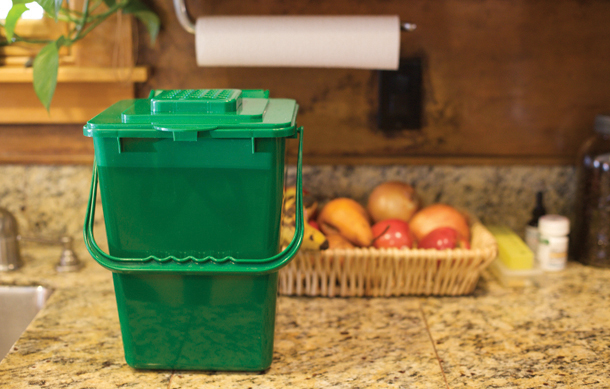
Photos by David N. Seelig.
Families rise to
the challenge
Photos by David N. Seelig
Saving the Earth is a bit like ending world hunger or war. The challenges seem so enormous, so difficult, we question whether any small action will make a difference. Then inertia sets in and excuses for our inaction start to mount. "I can’t recycle. I can’t carpool," we say. "I just don’t have time." In many cases, the rationalizations win out. But not always.
Today, four Hailey families are living proof that a succession of small changes can effect meaningful change for the environment and the household budget. Their journey started in early 2008. Elizabeth Jeffrey, a volunteer for the city of Hailey’s HELP initiative (Hailey Environmental Leadership Program), established the HELP Hailey 2008 Energy Challenge. The yearlong competition would test how residents could reduce their environmental impacts.
The families competed in five categories: household energy; transportation; water consumption; electricity use; and the reduce, reuse, recycle trifecta. Each category was studied in a two-month segment and participants were coached along the way by professionals and conservation experts.
The changes, the families say, were generally easier than they imagined. And all are promising to continue their reformed ways.
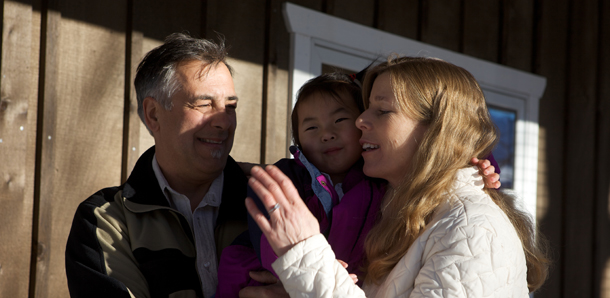
Amy Boyer & Dean Hernandez
Occupations: Boyer is an independent property
manager. Hernandez is an
independent landscape designer.
Success: Three R’s challenge (reduce, reuse, recycle) and the transportation challenge.
When Amy Boyer and Dean Hernandez moved from the East Coast to the Wood River Valley in 2001, they had a vision. They wanted to live their lives in a way that was comfortable, but would leave a lighter environmental footprint.
When they bought a simple one-story house in Old Hailey, remodeling presented an opportunity in green living. But Boyer wanted more. She wanted to engage with conservation in all areas of her life. The HELP challenge delivered. "The idea of being accountable, a competition for ourselves… it helped spur us into action," Boyer said.
They replaced most of the old-fashioned light bulbs in the house with energy-saving compact-fluorescent (CFL) bulbs. And they bought low-wattage night-lights for their young daughter, Audrey, who doesn’t like to be alone in the dark. Despite the changes, their electricity use increased. But so did their motivation. "If we didn’t do well, it was more of a challenge to do better," Boyer said.
Indeed, the lack of early success inspired them in the reduce, reuse and recycle contest. They were already avid recyclers, but learned they could do more. They increased their mixed paper recycling by a factor of five—nothing was too small to target. They started composting in a bin in their backyard and followed with a small compost bin in the kitchen. Looking at more creative ways to reuse, Boyer came up with some personal touches. She cut up old greeting cards to use as gift tags and transformed paper Audrey had painted or colored into gift wrap. They made sure Audrey’s unused toys ended up with other parents or at a thrift store. And during the holidays, they opted to buy less, focusing instead on fewer, high-quality gifts and charity donations. When they did buy new things, they looked for items with minimal packaging. The changes allowed them to switch to a smaller, 32-gallon city trash can, a savings of $130 per year. "We still are consumers," Boyer said. "But we’re much more conscious about what we buy."
Although the challenge is over, the efforts to maintain a green household will continue, Hernandez said. He has plans to landscape with water-conserving drip irrigation. And he’s looking into solar panels for the roof. "We didn’t make changes to win a competition," he said. "We made changes to alter the way we live, forever."
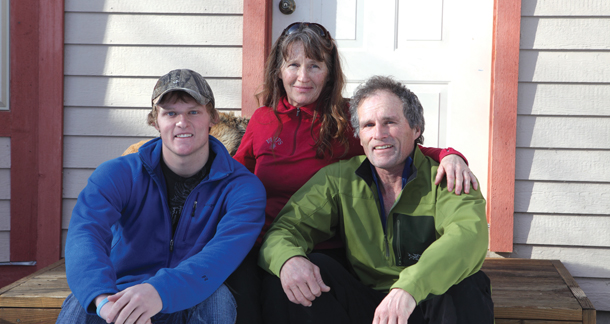
Mari Wania & Bill Leavell
Occupations: Wania owns Simple Kneads, an organic wholesale bakery. Leavell is the ranch manager of the Idaho Rocky Mountain Ranch.
Success: Water conservation challenge.
For Mari Wania, taking measures to protect the environment was nothing new. Running the Simple Kneads bakery out of her single-story home in Sherwood Forest, this 30-year valley resident routinely thought about the connections between lifestyles and the environment. In her business, she used locally grown ingredients whenever possible, minimized waste and planned her deliveries for maximum energy efficiency. In essence, she tried to live the low environmental impact that she preached.
Prior to the HELP contest, her conservation had plateaued. The initiative jumpstarted her imagination. Wania and her partner Bill Leavell, along with his son, John, upped their efforts. They bought energy-saving CFL light bulbs, insulated their hot water heater, dialed down their thermostat (65 by day, 62 at night) and installed heat-conserving window blinds. They bought a new Energy Star dishwasher and began hanging their clothes to dry.
Wania promised to drive less. "I pledged to bike or walk everywhere within two miles of my house, except for my deliveries," she said. "Even when it was pouring down rain, I’d say, ‘I made that pledge, so I’m just going to do it.’" As a result, she cut her gasoline consumption in half. One spring day, she borrowed a toddler bicycle trailer to test if she could deliver some 200 pounds of baked goods to Ketchum without using her car. "It didn’t work. Well, it did, but it took forever."
Prior to the challenge, Wania and Leavell lived greener than most. Once involved, they excelled particularly well in the water-use competition. By deep watering their grass for longer, less frequent cycles (30 minutes and only at night), they saved water without sacrificing a green lawn. "My grass stayed green and I had to mow it less often."
She went further by collecting gray water from the drains beneath her sinks and using it to quench her assortment of fruit trees and house plants. She installed a water bottle inside her toilet tank to reduce its capacity and all three members of the household took shorter showers. In the end, they cut their water use by 5,000 gallons during the peak-use months of July and August—about 17 percent. "It made me feel like I could really make a difference."
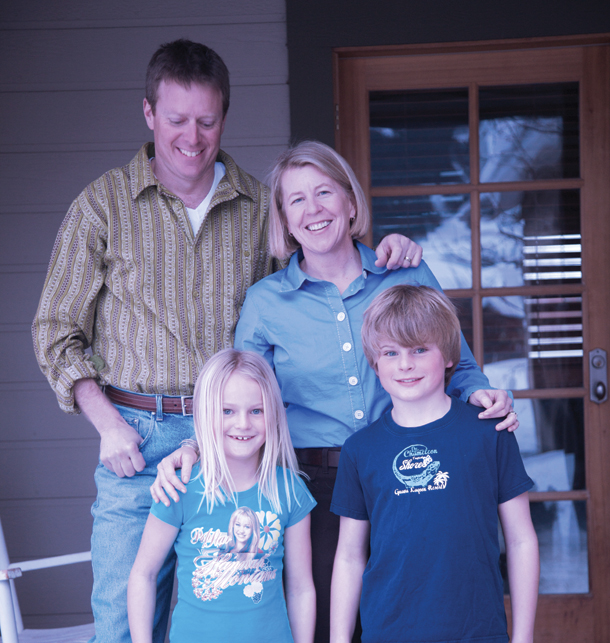
Molly Goodyear & Mike Wolter
Occupations: Goodyear is membership and volunteer coordinator for the Sawtooth Botanical Garden, a nonprofit public garden and educational center. Wolter is the membership director of the Wood River Community YMCA.
Success: Electricity conservation challenge.
"We’ve done our part." That’s how Mike Wolter describes his family’s efforts over the years to conserve fossil fuels. Before the HELP challenge, Wolter and Goodyear saw to it that their two children—Peter, 10, and Ella, 7—traveled to and from their Northridge home in a car-pool or on bikes. They recycled, and all tried to conserve electricity and water.
During the challenge, things changed. The family discovered how small changes could go a long way toward saving utilites and—to their delight—money. "We’ve reduced our bills significantly. It really makes you want to keep going," Goodyear said.
Instead of going for the home run that might come from costly upgrades—like installing solar panels or buying a hybrid car—this family made incremental lifestyle adjustments. They closed blinds at night to capture heat. They wrote names on the kids’ drinking glasses so they could use the same one throughout the day. They used gray water for the plants and Wolter stopped shaving in the shower. They reused grocery bags and paper and bought food from Idaho’s Bounty, a local sustainable food cooperative.
Going green also worked with this family’s inclination to exercise. In the summer, Wolter rode his bicycle to work in Ketchum at least twice a week. And he regularly took Peter and Ella out on their bikes to help with errands. Sometimes they covered four or five miles. "The best part was seeing the kids want to ride their bikes with us," said Wolter. The efforts produced tangible results. Wolter calculated that he saved $5 every day he commuted to work on his bicycle.
The electricity challenge produced the family’s best results. They installed CFL bulbs in all but a couple of sockets. They were vigilant against excess electrical light. They switched off energy-saving power strips when items weren’t in use. During a two-month span last fall, the family cut their electricity consumption by 31 percent. The savings on their bills, Wolter said, will quickly pay off all of the CFL bulbs he bought. "It’s gratifying," he said. "I don’t think I knew how significant a change it would make. It was an immediate difference." Goodyear sees the family’s efforts starting to sink in with the kids, and she hopes it endures. "It’s about a lot of little things that I think are easy to do."
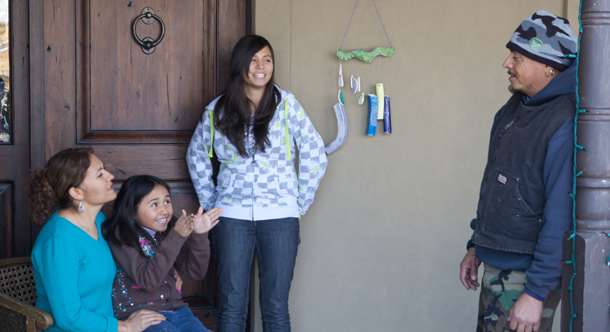
Eloina & Javier Zamora
Occupations: Eloina operates a daycare business. Javier is a roofing specialist.
Success: Heating challenge and the contest’s overall prize for most successful participants.
Deerfield residents Eloina and Javier Zamora are seeing life in a whole new light. After winning HELP’s overall prize, they envision a world where everyone pitches in to save the environment. "What if all the families in Deerfield did what we have done?" Javier asked. "And then the neighborhood next to it? And then the next one?"
Eloina thinks her two daughters, Karina, 14, and Josie, 9, are now equipped to be the ambassadors the world needs. "I told the girls, ‘We’re not doing this for one month, or two. You have to do it every day for the rest of your lives.’" They listened. The Zamoras have established a long list of simple rules to live by. They take shorter showers and are judicious about flushing the toilet. They recycle everything they can. They don’t wash clothes that have only been worn once. Appliances are used sparingly, and a set of eyes is always on the thermostat and the lights.
At times, energy saving is a game. If one girl is spending too much time in the shower, Eloina might turn on hot water so the shower runs cold. Some efforts have a dual purpose: They save resources and money. The family shops locally, planning trips in advance so more errands can be completed in fewer miles. Javier is dismantling two stone planters that once blossomed with water-hungry roses. The lawn is giving way to pavers and several sprinkler heads have been eliminated. The Zamoras have saved dollars on gasoline and utilities and Javier expects the energy-saving dishwasher to pay for itself in a year.
The family excelled best in saving heat energy. They cut consumption and costs by 23 percent. The thermostat that had been above 70 now hovers at 65. Window shades stay open during the day to maximize solar heat and Javier added insulation everywhere he could, even under the floorboards.
Conserving resources takes effort and maybe even some sacrifice—fewer roses and shorter showers. But inaction has its costs: climate change and the threat of price spikes for scarce resources. The alternative? Learning about conservation by necessity after there’s nothing left to conserve. Then it will be too late to achieve that vision where everyone does their part and the Earth, and its people, thrive.
What
Can I Do?
1. Turn down the heat
Install a programmable thermostat or simply lower the heat for
substantial winter savings.
2. Install CFL bulbs
Their efficiency and long life-span makes up for their higher initial
cost.
3. Save water
Take shorter showers, turn off the faucet when brushing your teeth, and
run dishwashers and washing machines only when full.
4. Lights out
Light equals energy. Use only what you need.
5. Plan trips to town
Take fewer, more efficient trips or ride your bicycle or carpool
instead. You’ll get exercise or time with friends and save energy.
6. Deep water the lawn
Longer, less frequent sprinkler cycles save water without killing the
grass.
7. The three R’s
Start a recycling system (see Page 13). Reuse plastic bags and paper.
Buy products in bulk or in minimal packaging.
8. Use power strips
Plug computer systems and electronics into a single set of receptors
that can be switched off.
9. Harness solar energy
Open the blinds on south- and west-facing windows during the day to
absorb heat and close them at night to keep it in.
10. Compost
Sink disposals use lots of electricity and water. Organic food waste and
even paper decay into quality fertilizer for gardens or trees.